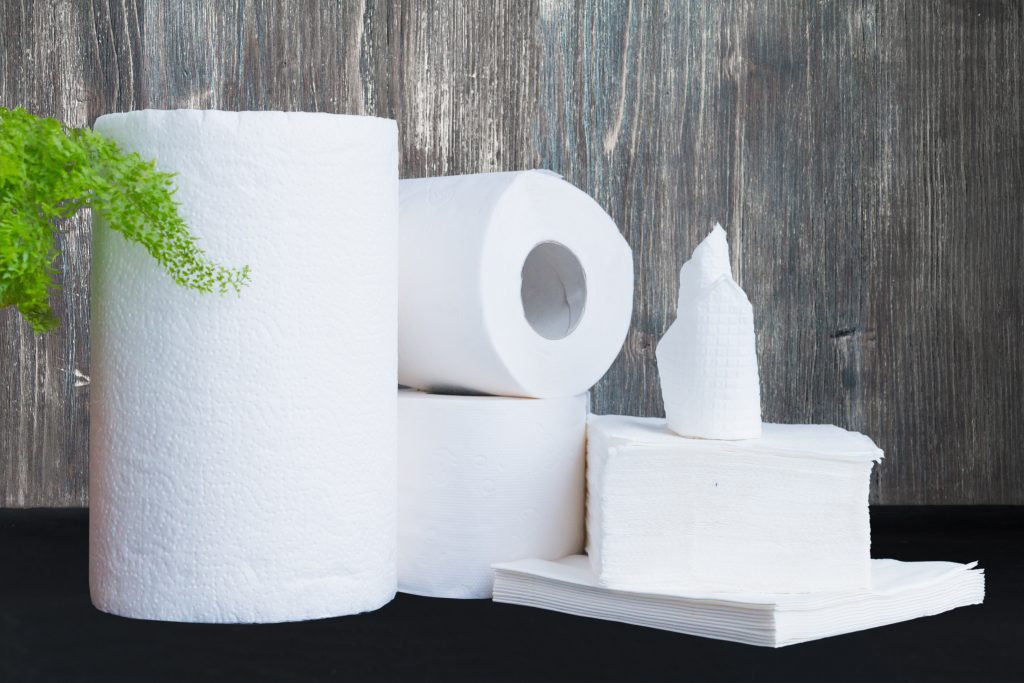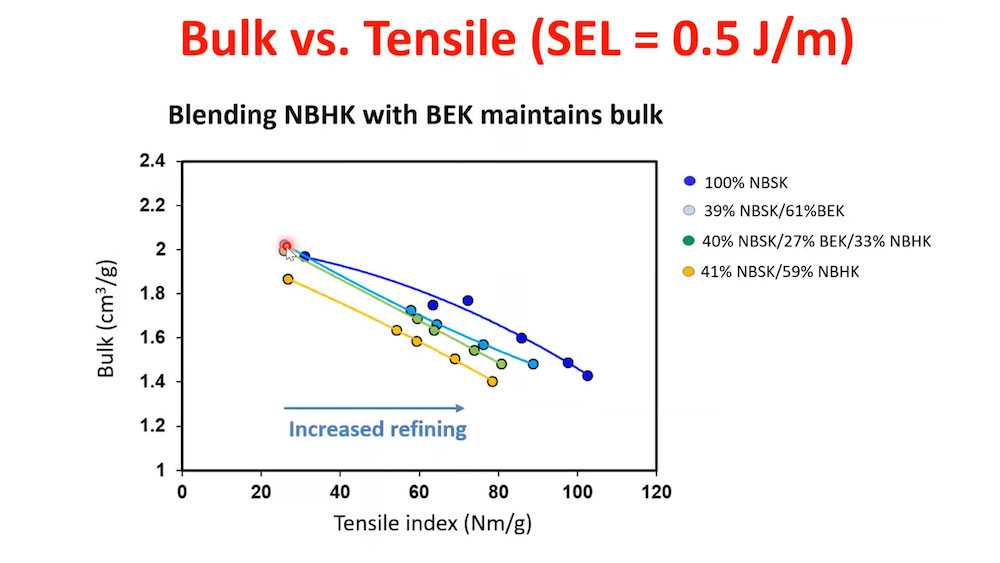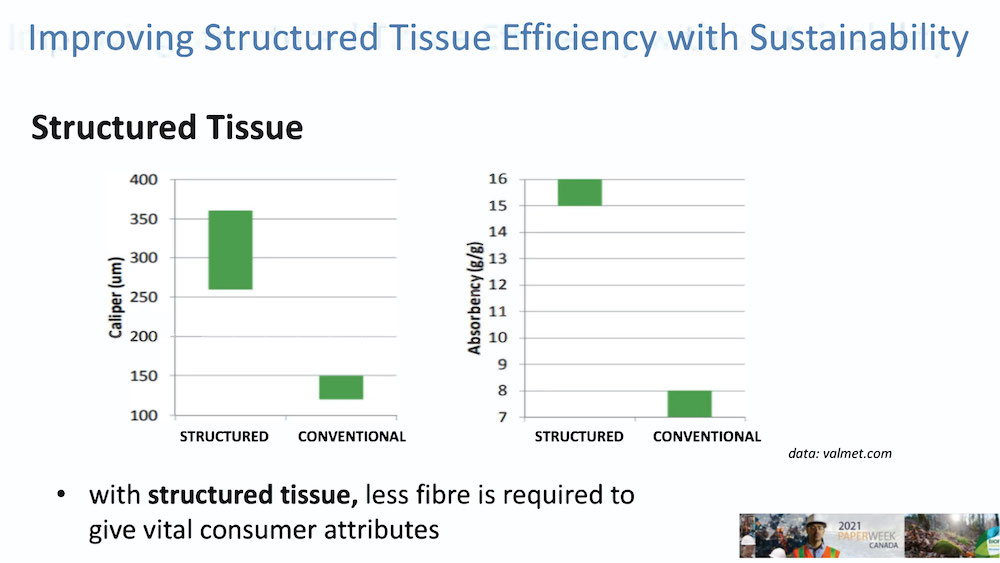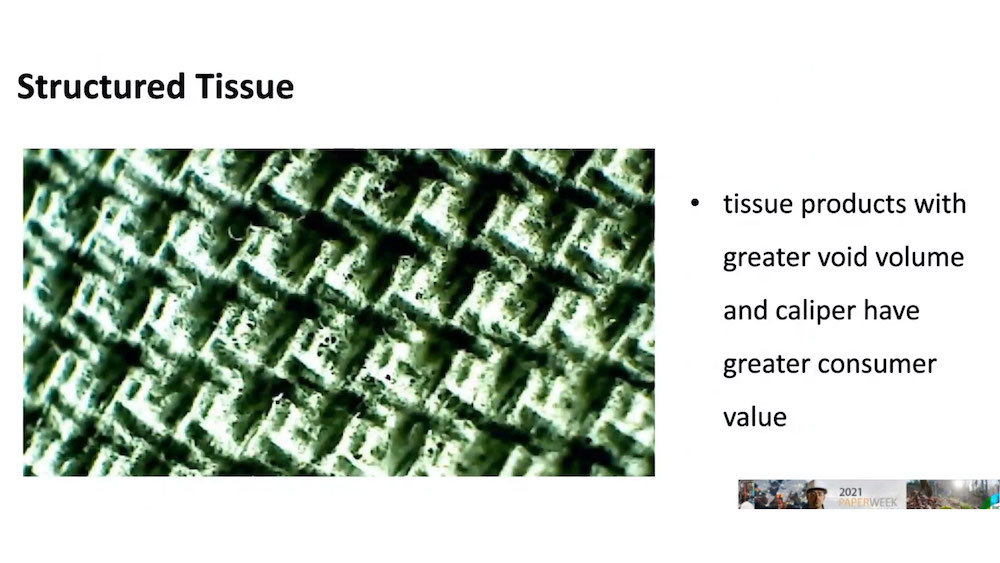
Features
Financial Reports & Markets
Tomorrow’s tissue technology trends
PaperWeek Canada's tissue track focused on innovations in pulp types, release agents and strength additives
May 10, 2021 By Martin Fairbank, PhD
 Photo: Studio Dagdagaz/Adobe Stock
Photo: Studio Dagdagaz/Adobe Stock At PaperWeek Canada 2021, held virtually this year, one well-attended technical program was focused on tissue. To set the scene, Brian McClay, a well-known Canadian industry consultant, talked about world market trends.
One of the effects of the COVID-19 pandemic on the tissue market, as people are spending more time at home, has been a shift in demand towards consumer grades of tissue rather than “away-from-home” commercial products. This means there has been a higher demand for the premium and ultra-premium grades preferred by consumers, with high bulk and absorbency, which can only be made on certain newer tissue machines.
Another trend affecting all pulp and paper markets is a planned expansion of pulping capacity in China, as they implement their so-called “dual circulation strategy.” This is a long-term plan announced in May 2020 to rely more on internal circulation (the domestic market) and less on external circulation (imports and exports).
Bamboo pulp
China implemented a ban on recycled fibre imports to China as of Jan. 1, and consequently there is a mad scramble to implement integrated virgin pulp and paper facilities in China over the next few years. McClay listed 34 pulping projects that have recently been announced, for a total capacity of 14.6 million annual tonnes.
Clearly a current lack of secure wood supply will prevent many of these proposed projects from coming to fruition, but many bamboo plantations have been recently established or are planned, and because bamboo has a short growth cycle of only three to five years, there will definitely be a major disruption in pulp imports to China in the next few years.
Xuejun Zou, manager, chemical process at FPInnovations, confirmed the increasing use of bamboo pulp in Chinese tissue. About half of Chinese bamboo production is currently used for tissue, and most of the newest machines in China use a combination of bamboo and eucalyptus kraft pulp.
Zou looked at the effects of varying the pulp furnish in tissue produced on the FPInnovations pilot machine. The furnish was 40 per cent NBSK and the remaining 60 per cent either BEK (eucalyptus), NBSK (aspen) or a 50/50 mixture of these two. His results showed that the 50/50 mixture performed as well as the BEK in terms of strength and bulk, but the aspen pulp in the 50/50 mixture reduces tissue linting and dusting, which can be a major issue in converting plants.
Tissue can be classified into four different quality levels: away-from-home, economy, premium and ultra-premium. The differences are mostly due to the amount of bulk, absorbency and softness, which are all related, since a bulkier sheet is generally both more absorbent and softer. There is usually a trade-off, however, between these desirable tissue properties and the sheet strength necessary for good runnability of both the tissue machine and the subsequent converting equipment.
A common element of several of the presentations was how to optimize tissue strength with a minimal effect on bulk, softness and absorbency. Five basic strategies were suggested:
- Choice of fibre and pulp types
- Structured tissue
- Soluble strength additives
- Pulp refining strategies
- Addition of cellulose nanofibers
Fibre and pulp type
Zhibin He, senior research scientist at the University of New Brunswick, briefed the audience on the relationships between fibre properties and tissue performance. It is well understood that long, flexible fibres such as northern softwood deliver tensile strength, whereas thicker-walled fibres such as southern softwood deliver bulk and absorbency because their lumens do not collapse as easily. Bulk and softness can also be achieved by using hardwood fibres such as eucalyptus or acacia, due to their shorter, lower-diameter and flexible fibres.
Structured tissue
David Welsford, who works on field applications of new products for Solenis, talked about an upcoming development for high-bulk tissue. He showed an example of a high-bulk paper towel for mopping up kitchen spills, and part of a growing market in North America.
Compared to conventional tissue machines where the Yankee dryer both presses the sheet and evaporates the water, the bulky structure of a structured tissue like the one illustrated is formed by the woven texture of the plastic mesh fabric, enabling a much higher caliper and water absorbency from the same basis weight of fibre.
The through-air drying (TAD) process dries the sheet through a combination of vacuum and hot air blown through the sheet, rather than pressing, which allows the structure applied by the fabric to be retained after drying. To remove the sheet from the fabric without damaging this structure, a release agent is applied (typically four kilograms per tonne) to enable its removal without loss of bulk. Traditionally, this release agent is an oil-based product derived from petroleum.
There is usually a trade-off between these desirable tissue properties and the sheet strength necessary for good runnability of both the tissue machine and the subsequent converting equipment.
One issue with the high temperatures involved is the tendency of this oil to produce a smoke or fog of atomized particles, which is a health and safety issue. A second issue is the discharge of this release agent into the waste stream, particularly in urban tissue mills that discharge to municipal treatment systems that have limits on fats, oils and greases (FOGs).
Solenis has been working on developing a safer and more sustainable product based on a bio-sourced and biodegradable product that meets all the other requirements of the application. Extremely promising field trials have been carried out. Some of the observed benefits include lower effluent toxicity, ability to meet municipal FOG requirements, 50 per cent lower dosage than conventional release agents, less machine room misting, reduced eye irritation, and a reduced requirement for adhesive between layers of tissue when making a multi-ply product.
The product is not yet commercially available, because there is still more to be learned from trials, and production of the new release agent still needs to be brought up to commercial scale. It looks as if the product will be of great interest in certain niches of the tissue industry.
Strength additives
One method that has been shown to improve the bonding strength of tissue is the use of a wet-end additive such as cationic starch or spraying an uncharged hemicellulose product such as xyloglucan onto the sheet. Both these approaches will increase hydrogen bonding within the sheet and have little effect on the bulk.
Pulp refining strategies
Fibres are usually refined to maximize the surface area and the resultant fibre bonding, but too much refining can reduce the bulk. When using a mixture of pulps, it is helpful to refine the pulps separately, since hardwood and softwood pulps, for example, have different refining curves. It has also been shown that low-intensity refining, using gentler action with specially designed refiner plates, can develop externally fibrillated fibres, good for high surface area, with less damage to the lumens, preserving bulk.
Addition of cellulose nanofibres
Finally, nano-fibrillated cellulose (NFC) or cellulose filaments can be added to the furnish. This is a way of increasing the surface area of cellulose in the product, with the advantage that it is more easily retained than soluble additives. Recent results published in China showed that addition of NFC to bamboo pulp-based tissue handsheets showed an increase in tensile strength, bulk and water absorbency.
Tissue production is a growing market that is characterized by new machines being built around the world. As well as selecting appropriate paper machine technology, choosing the right fibres, refining strategies, and additives to meet the quality demands of their customers while minimizing the overall cost will become increasingly important to remain competitive in this field.
Martin Fairbank has worked in the pulp and paper industry for over 30 years and is currently a consultant and technical writer.
This article appears in the Spring 2021 issue of Pulp & Paper Canada.
Print this page


